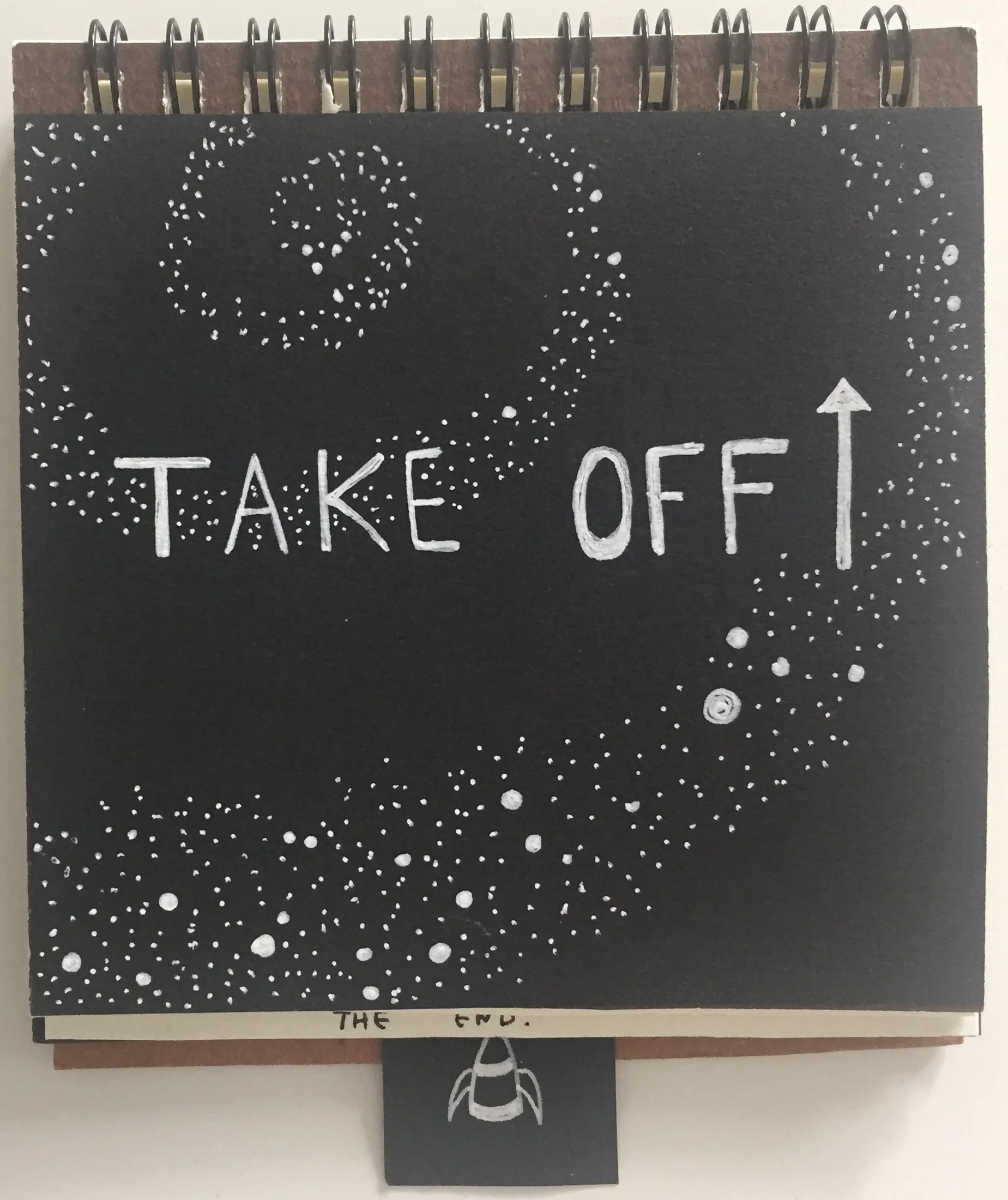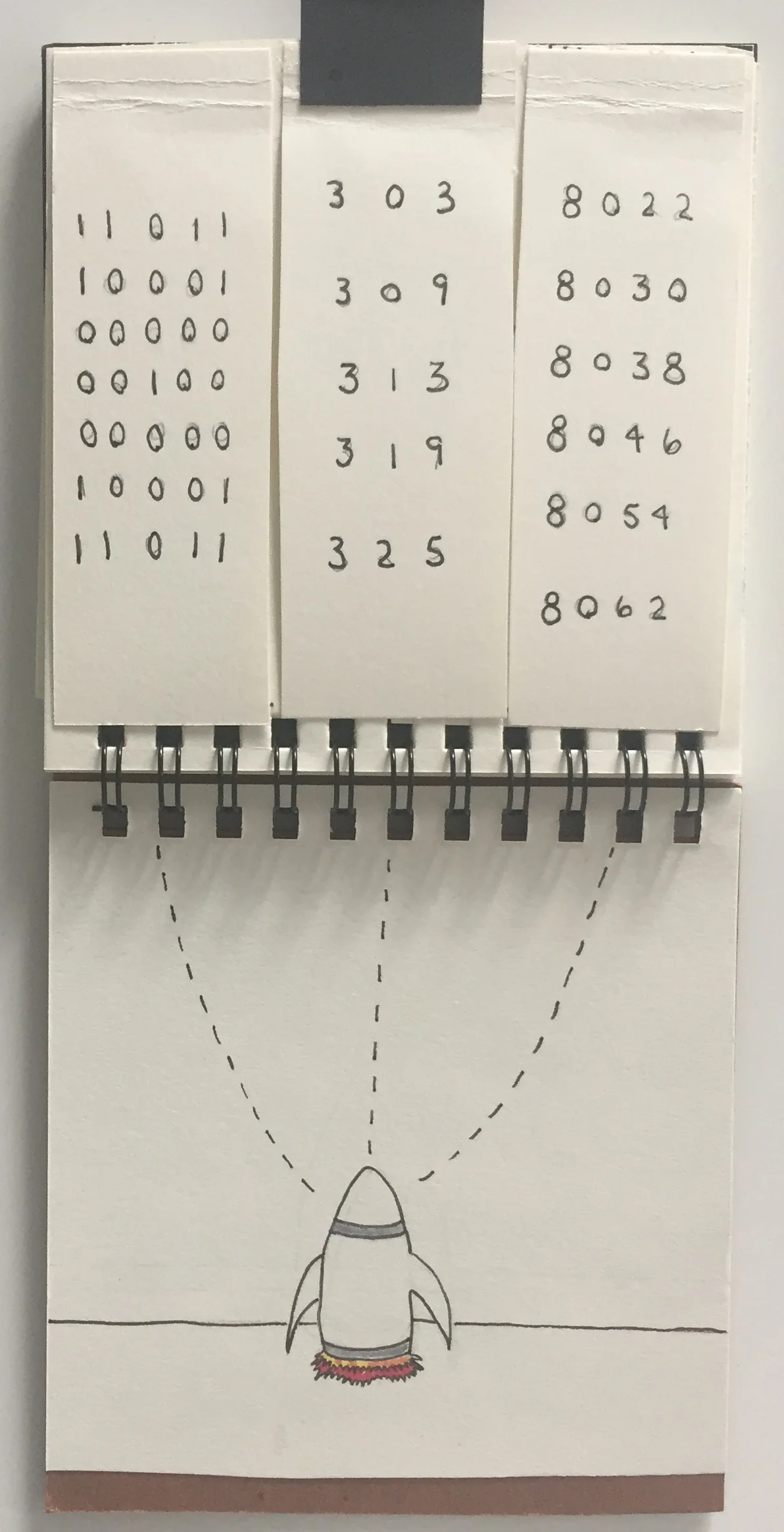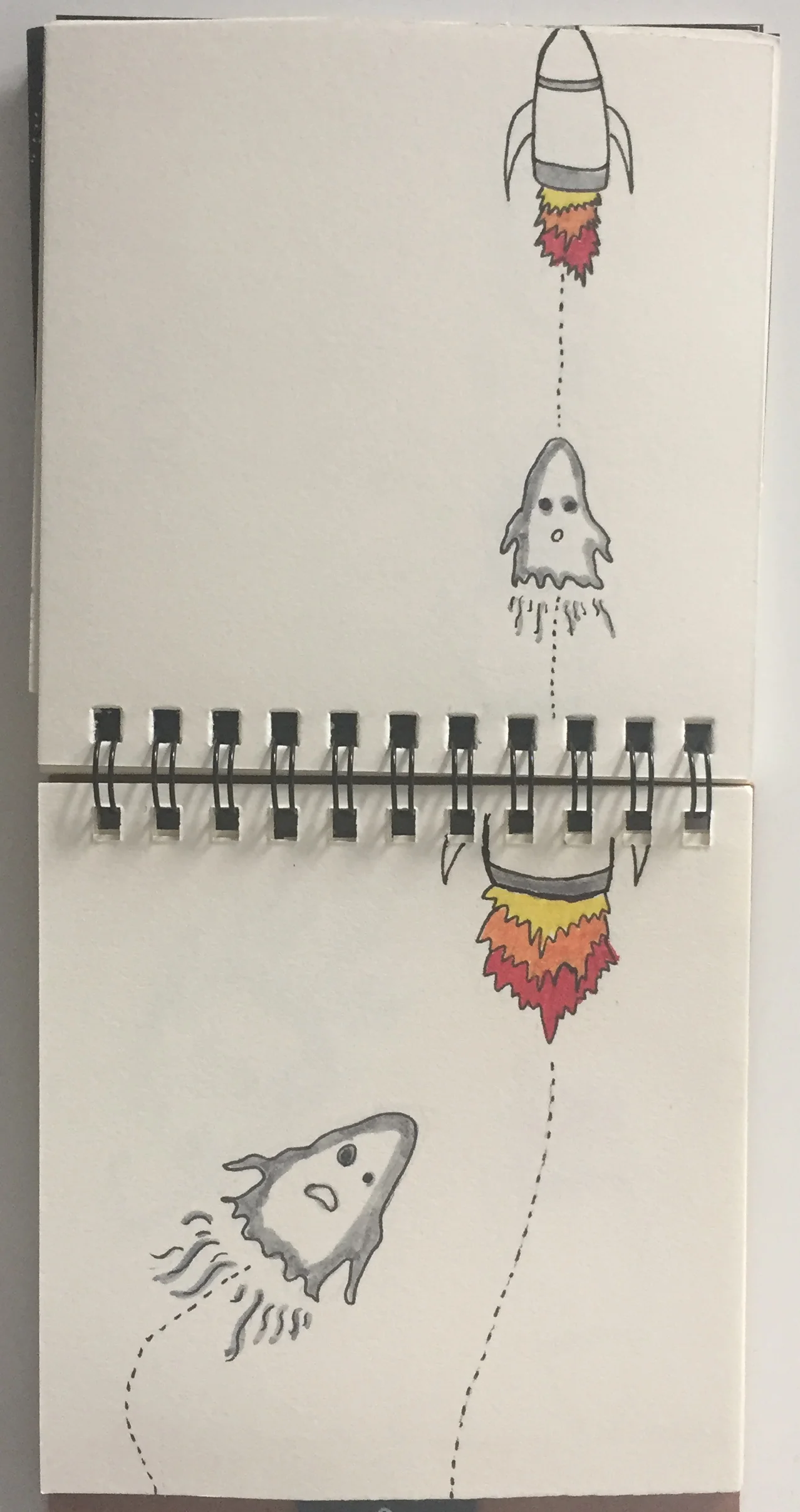
Project Type: School Winter 2017 (solo)
Role: Designer, Artist
Assignment: Two days to make a game that had three stages to it and didn't require a play book. Once created, we playtested them in front of the class, where students had to play each of them without any guidance.
The test:
1. Is your objective obvious?
2. Is it user friendly?
3. Can the player finish the game without any hints.
4. Was it fun?
My take on the project was to make a flip book.
Draft + Final Pages
Designing
I figured everyone loves outer space and rocket ships, and the easiest way to guide the stages were to make riddles. I found the problem with making riddles is that I understand them perfectly, because I wrote them. However, it's hard to step back and be objective about how easy they are to solve.
Designing the layout was a blast (get it?). I started out making a larger version of the book, but realized quickly that it should be small and quaint. I wanted the colors to get more vivid and magical as the book continued. The illustrations start small and then grew into something more intricate.
I wanted this to be an exploration, not a nA to B sort of puzzle. The riddles and the open-ended nature of the book were something I thoroughly enjoyed.
Was it successful?
Nope, and sort of? During the playtest, the student selected to play my game didn't get it at all. I gave hints the entire way through. I found most adults had this same experience. They didn't know that the second ship that appears at the second stage was a ghost ship. They didn't figure out that the words in the third stage were backwards. They couldn't even figure out how to open the book and start the adventure. Kids, on the other hand, got all of this immediately. They knew how to open the book, they knew the numbers were patterns, they knew it was an evil ghost and that the ghost came from the explosion on the first round. Completely fascinating to see the different experiences based on age.






